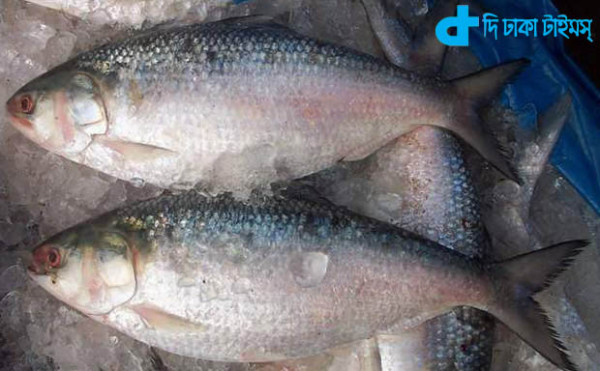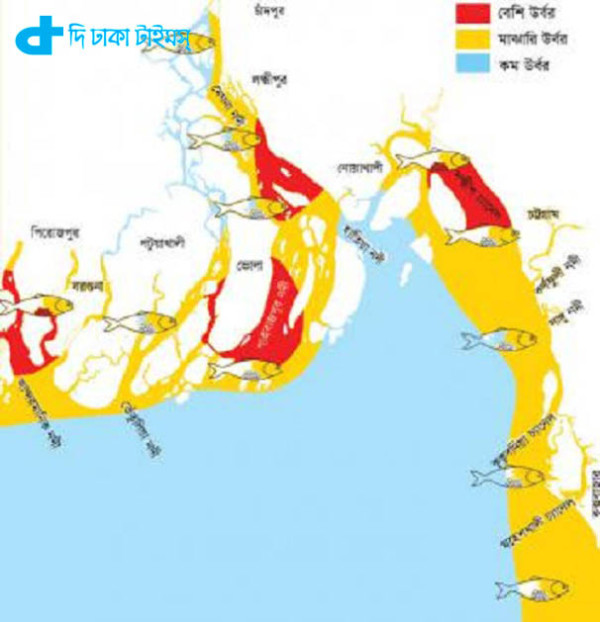The Dhaka Times Desk Hilsa was not seen even in the full season of Ashad month. Everyone has an anxiety. Why is there no hilsa in the market? In such a situation, for the first time, a group of researchers from Chittagong University identified the breeding grounds of hilsa in different rivers and coasts of Bangladesh. Experts said, taking action will increase production twice!

Hilsa could not be seen even in the full season. Suddenly, a lot of hilsa is seen in the market since last Friday. This means that the hilsa is being caught in the fishermen's nets. People seem to breathe a little. However, along with that relief, a group of researchers from Chittagong University gave another good news. They researched and identified hilsa breeding grounds.

This time, for the first time, the researchers of Chittagong University have identified the breeding grounds of hilsa in different rivers and coasts of Bangladesh. These researchers expressed optimism that if fishing is stopped in these breeding grounds at certain times of the year and measures are taken to prevent pollution, the production of hilsa will double.
Saidur Rahman Chowdhury, SM Sharifuzzaman and research assistant Subrata Sarkar under the leadership of Md. Shahdat Hossain, director of the Fisheries and Marine Science Institute of Chittagong University have prepared this report by researching the country's sea and various rivers for 30 thousand square kilometers for 2 years. Besides, they have used the information obtained from the fishermen of different areas of the country for research work.

The full report of this study was recently published in the online science and environment journal 'Science Direct', titled 'Discovering Swamping Ground of Hilsa in Coastal Waters of Bangladesh'.
In the research report, hilsa breeding grounds are divided into 3 categories – high, medium and low fertility. The most fertile hilsa breeding grounds in the country are located in the Shahbazpur, Tentulia, Andharmanik and Meghna rivers and the Sandwip channel of the Bay of Bengal. On the other hand, moderately fertile spawning grounds are spread in various river estuaries and coastal rivers of the sea, the study noted.
On the other hand, the hilsa breed in deep sea areas far from the coast, so these areas have been identified as less fertile areas. Researchers have advised to completely stop fishing in these areas at certain times of the year as the migration and breeding grounds of hilsa. They also urged to reduce the pollution of fertile and moderately fertile breeding grounds.
Researchers believe that if pollution is not reduced, these breeding grounds may not be sustainable. And then Hilsa will go to the coast of a neighboring country and lay eggs. Researchers have tested the physical and chemical properties of water in about 23 regions of the country's sea and rivers area of 30,000 square kilometers. Besides, the information provided by the fishermen of Bhola, Patuakhali, Hatia, Laxmipur, Noakhali, Chittagong, Sandwip, Kutubdia, Maheshkhali and Jelepalli in Cox's Bazar has been used in the form of scientific data. Apart from this, these researchers have also observed the availability of hilsa directly by staying in fishing boats in Hatia, Tentulia, Shahbazpur, Andharmanik and Meghna rivers.
Md Shahdat Hossain, head of the research team told the media, '90 percent of the hilsa found in the world is caught from the Bay of Bengal. Among them, 80 percent of hilsa is caught on the coast of Bangladesh, only 10 to 20 percent on the coast of India and 3-4 percent in Myanmar. He said, according to the calculation of 2010-11, the amount of hilsa caught in Bangladesh in a year is like 3 lakh 40 thousand metric tons.
Md. Shahdat Hossain thinks, 'Having designated all the fertile breeding areas of Hilsa as shelters, it has become necessary to save Hilsa with eggs. It will produce about 2 thousand crores extra. Again, if protection is given, more chicks will have a chance to grow up. This will produce at least 200,000 tons of additional hilsa fish.
The researchers claim that this is the first comprehensive study on the breeding grounds of hilsa in the subcontinent. For this, the government should quickly focus on the conservation of fertile breeding grounds; These habitats must be protected. This will almost double the production of hilsa in the country. Researchers think that there will be no shortage of hilsa in the full season.


